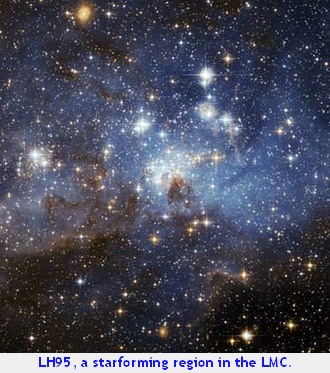| View Online |
YSO Bulletin |
 |
- Some gleanings from the latest edition of the Star Formation Newsletter - | |
New FUOR to Follow!A study at Konkoly University (Hungary) has looked at optical-infrared photometric and spectroscopic observations of Gaia18dvy, located in the Cygnus OB3 association at a distance of 1.88 kpc. The object was noted by the Gaia alerts system when its lightcurve exhibited a >~4 mag rise in 2018-2019. The brightening was also observable at mid-IR wavelengths. The infrared colours of the star became bluer as the outburst progressed. Its optical and near-infrared spectroscopic characteristics in the outburst phase are consistent with those of bona fide FU Orionis-type young eruptive stars. The progenitor ofthe outburst is probably a low-mass K-type star with an optical extinction of ~3 mag. Modelling of the circumstellar structure, based on the quiescent spectral energy distribution, indicates a disk with a mass of 4×10-3 M☉. Their simple accretion disk modelling implies that the accretion rate had been exponentially increasing for more than 3 years until mid-2019, when it reached a peak value of 6.9×10-6 M☉ yr-1. In many respects, Gaia18dvy is similar to the FU Ori-type object HBC 722. 
More FUOR-ing!In the same edition of the SFN, Cheng et al present a near-infrared (NIR) variability analysis for a 6’×6’ region, which includes the massive protocluster G286.21+0.17 in the region of η Carinae. The total sample comprises more than 5000 objects, of which 562 show signs of a circumstellar disk based on their infrared colours. The data includes HST observations taken in two epochs separated by 3 years, and 363 objects (7% of the sample) exhibit NIR variability at a significant level (Stetson index >1.7), and a higher variability fraction (14%) is found for the YSOs with disk excesses. They identified 4 high amplitude (>0.6 mag) variables seen in both NIR bands. Follow up and archival observations of the most variable object in this survey (G286.2032+0.1740) reveal a rising light curve over 8 years from 2011 to 2019, with a K band brightening of 3.5 mag. Overall the temporal behavior of G286.2032+0.1740 resembles that of typical FU Ori objects, however its pre-burst luminosity indicates it has a very low mass (<0.12 M☉), making it an extreme case of an outburst event that is still ongoing. |
More on AB AurigaeWith the recent discovery, using ALMA, of two gaseous spiral arms inside the ~120 AU cavity and connected to dusty spirals, the famous protoplanetary disk around AB Aurigae presents a strong incentive for investigating the mechanisms that lead to giant planet formation. A candidate protoplanet located inside a spiral arm has already been claimed in an earlier study (see last month's issue) based on the same ALMA data. A French team led by A. Boccaletti used SPHERE at the VLT to perform near-infrared high-contrast imaging of AB Aur in polarized and unpolarized light in order to study the morphology of the disk and search for signs of planet formation. They say: "SPHERE has delivered the deepest images ever obtained for AB Aur in scattered light. Among the many structures that are yet to be understood, we identified not only the inner spiral arms, but we also resolved a feature in the form of a twist in the eastern spiral at a separation of about 30 AU. The twist of the spiral is perfectly reproduced with a planet-driven density wave model when projection effects are accounted for. We measured an azimuthal displacement with respect to the counterpart of this feature in the ALMA data, which is consistent with Keplerian motion on a 4-yr baseline. Another point source is detected near the edge of the inner ring, which is likely the result of scattering as opposed to the direct emission from a planet photosphere. We tentatively derived mass constraints for these two features." Massive YSOsVioque et al Intermediate-mass PMS Herbig Ae/Be stars are key to understanding the differences in formation mechanisms between low- and high-mass stars. The study of the general properties of these objects is hampered by the fact that few and mostly serendipitously-discovered sources are known. The goal of a study by Vioque et al was to identify new Herbig Ae/Be candidates to create a homogeneous and well-defined catalogue of these objects. They applied machine learning techniques to 4,150,983 sources with data from Gaia DR2, 2MASS, WISE, and IPHAS or VPHAS+. Several observables were chosen to identify new Herbig Ae/Be candidates based on our current knowledge of this class, which is characterised by infrared excesses, photometric variabilities, and Hα emission lines. Classical techniques are not efficient for identifying new Herbig Ae/Be stars, mainly because of their similarity with classical Be stars, with which they share many characteristics. By focusing on disentangling these two types of objects, their algorithm has also identified new classical Be stars. They have produced a catalogue of 8470 new PMS candidates, and another of 693 new classical Be candidates with a completeness of 78.8±1.4% and 85.5±1.2% respectively. Of the catalogue of PMS candidates, at least 1361 sources are potentially new Herbig Ae/Be stars according to their position in the Hertzsprung-Russell diagram. In their study they present the methodology used, evaluate the quality of the catalogues, and perform an analysis of their flaws and biases. For this assessment, they made use of observables that have not been accounted for by the algorithm and hence are selection-independent, such as coordinates and parallax-based distances. The catalogue of new Herbig Ae/Be stars increases the number of known objects of the class by an order of magnitude. |